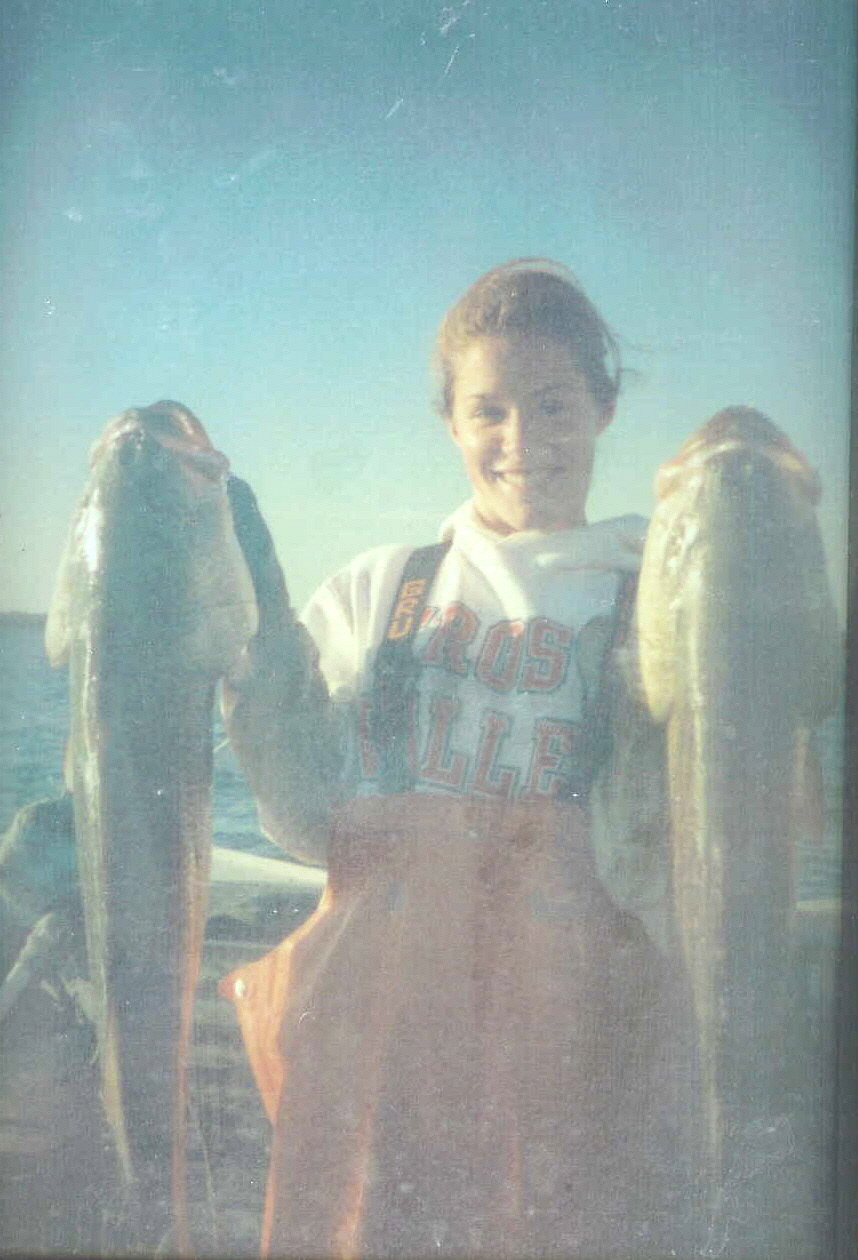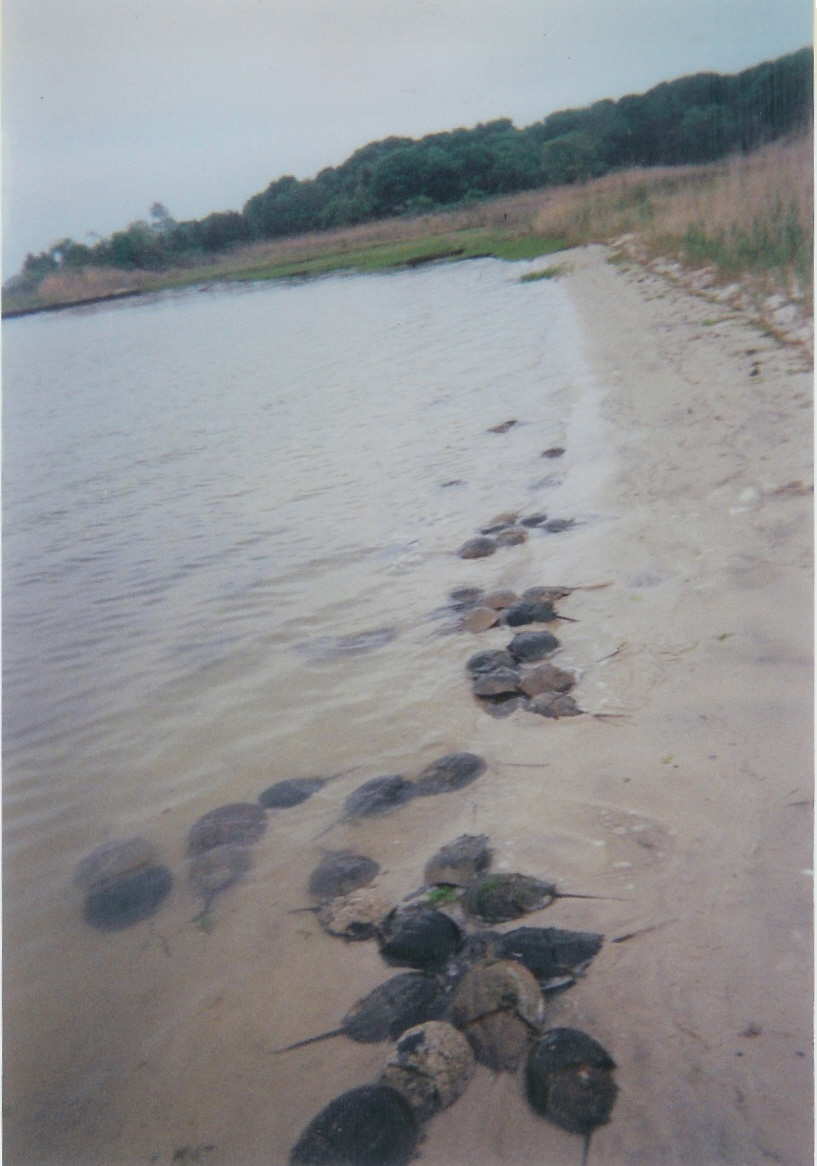
One sunny summer afternoon I was out in our yard tilling the little victory garden that I had enhanced with the carcasses of otherwise underutilized sea robins and summer dogfish. Our second child was pensively dangling from a swing on the swing set I had erected not twenty feet from me. I noticed her head turned to the ground below her, her dirty blond curls hanging in front of her round, angelic face. As her feet slowly scraped along the eye-shaped brown bald patch of hard packed soil surrounded by lush green grass that is typical under heavily used swing sets, I readied myself for what was surely to come. Rebecca’s four year-old mind had begun to notice worlds beyond her own little one, and she was in the habit of asking remarkably insightful, and exquisitely and delightfully uninformed questions. She had recently inquired of her mother if they had to kill cows to get milk.
“Daddy, could you raise the swing?” she called.
“Sure, Honey. Why?” I asked, playing the good straight man, as all loving fathers must from time to time.
Without looking up, she said wistfully, “Because I can’t stand the sound of the worms screaming.”
Becky has always thought and acted “out of the box”; she is currently pursuing a Doctorate in Switzerland, having achieved a Master’s at Oxford, where women make up about five percent of the student body. But, today, reflecting on this cherished memory after having read the latest proposals to come down the fisheries policy pike, I realized that she had the makings of a good marine environmentalist back then. In particular, local environmental scientists seem to be responding to the anguished cries of the dwindling numbers of sandpipers known as red knots, cries they alone can hear, as they starve to death for want of horseshoe crab eggs. Their own numbers put adult horsefeet (as we local Long Island bayman are fond of calling them) in the millions while the the particular pigeon sized endangered fowl has dwindled down to less than ten thousand individuals. I guess they need lots of horsefoot eggs.
But, as with my little girl on the swing, they have no classical science to back up their theory. There is no physical evidence that the disappearance of these red-breasted shorebirds is at all linked to the numbers of horseshoe crabs in our estuaries. In fact, the evidence would normally indicate the contrary, since it has been reported that while the numbers of these above-the-high-tide-mark egg-laying helmet-shaped crustaceans are booming, the red knot is still in dangerous decline. We can only assume that these concerned environmentalists must be hearing subliminal — and quite specifically detailed — SOS’s from these wide ranging tundra breeders.
From my own experience the problem may not be that there aren’t enough female horseshoe crabs. Their numbers have increased exponentially in the few years since the promulgation of “emergency” horseshoe crab measures, enacted to insure that shorebirds of all kinds would continue to come and populate our shores. I suppose they may have gone to the mountains or our city streets in search of this all important food source. But, not to worry. There are so many horsefoot trains — large egg laden females always followed by one to three males attached boxcar-like — of these extraordinarily prolific creepy-crawlers along our beaches from early spring through the Fourth of July that if they suddenly acquired a taste for human flesh, all those within a mile of the water would be skeletons by morning.
May I submit that it may be that there are too many land birds living near our waterways that is causing the suffering for the cherished knot of red. I can always tell when there has been a horsefoot orgy on the overnight high tide on the sand spit next to the town dock where I launch my boat, this by the hordes of sparrows, starlings and blackbirds feverishly flailing away at the sand with their stout beaks designed to pick bugs and seeds from fields, and shrubs. The environmentalists are right — there are no red knots among them.
Come to think of it — in my nearly half century of fervent and studied bird watching along Long Island’s shores, I’ve never seen a red knot. Those damned sparrows and starlings. Aren’t they in this Country illegally??


{ 3 comments… read them below or add one }
What an interesting comment on what has become a passionate plea amongst the naturalists along the East Coast to place moratoriums on harvesting the hosefeet in order to save the redknots. To frame it in your daughter’s young-naturalist intuativeness with regards to hearing the worms makes it all the more poignant and special. I will be thinking about this post for a while. Thanks for putting the wondering out there.
Deb
Thank you, Deb, for your comments. I’m in an industry that has been turned on its head and is being gutted by the powerful environmental lobby, and there is no rhyme or reason to it. It seems to be the “Frankenstein monster” school of ecological resource management — “Horseshoe crabs –good! Fishermen –bad!!” This goes for the harvesting of any naturally occurring seafood products.
Chuck, liked the article on red knots ,i loved the way you ended it.It was very funny ,and your explantion was better than the environmentalists!
Susan